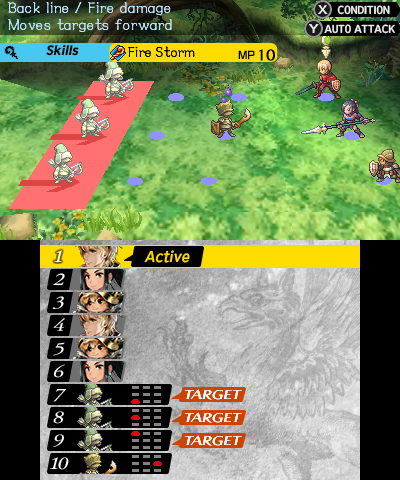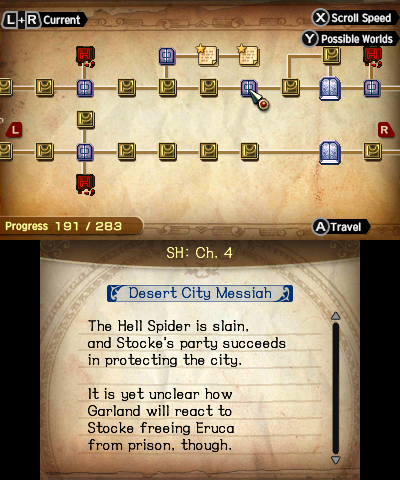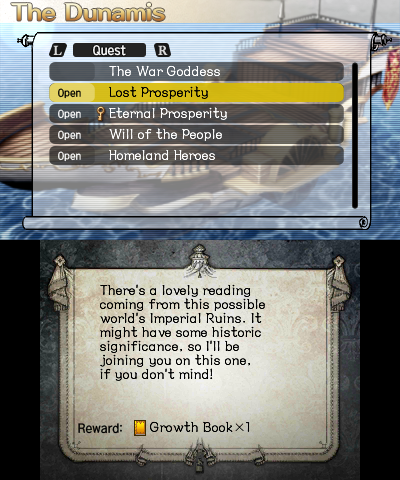- Genre: Platformer
- Platform: Switch
TL;DR
- Really low difficulty continues to be the weak point of the series
- Solid amount of content, lots of hidden secrets, really good end boss sequence
- AI characters are surprisingly competent as co-op replacement; combinations of powers are a compelling addition to the Kirby formula
It’s been kind of the standard fare for the Kirby series over the last 10 years or so that the games end up being really solid, have one neat twist to their mechanics to stay fresh, but end up being really too easy. Planet Robobot gained a mech suit to do occasional wrecking of things. Triple Deluxe brought in a lot of use of multiple planes of depth. Epic Yarn had the obvious visual style and strong environmental manipulation. By and large they have all been really good games that leaned on just being purely fun, rather than difficult. Star Allies doesn’t change that at all, this time playing into a multiple character theme where you can recruit enemies to help you out, as well as combine their powers to solve puzzles. It’s definitely an easy game, but it didn’t end up hampering the experience in a negative way.
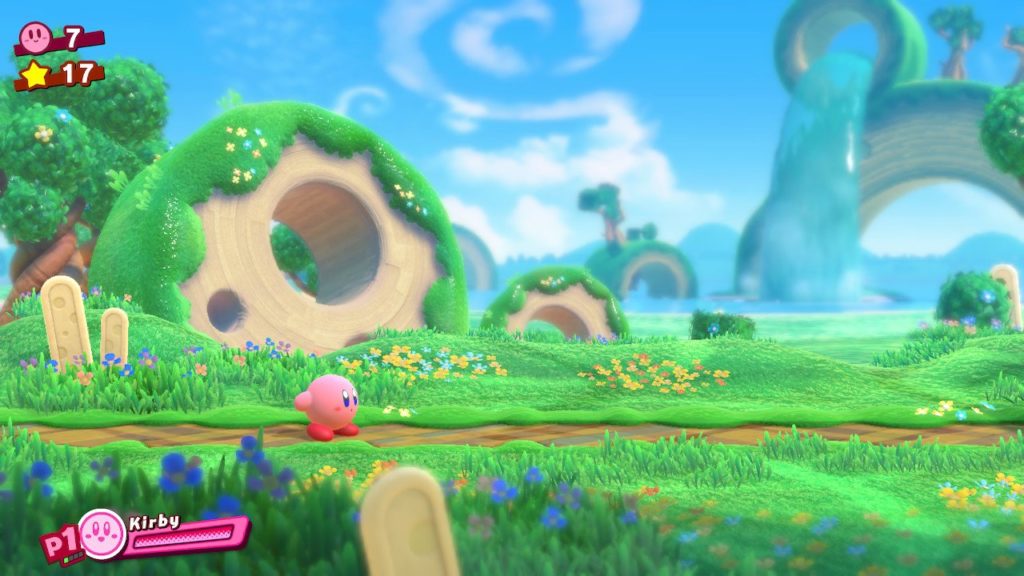
I know this is a weird place to start rambles, but holy hell this game is beautiful to a point that really caught me off guard. While the Kirby series has always held its own pretty well, and in some cases had some unique visual treatments, I was not expecting this one to impress me so much. That screenshot above is the spawning spot for the first level in the game, and it continues to impress throughout. There’s a large variety in visual themes from deserts to forests to fields and later on right into space. Each level is distinct from the other, so as a player I never grew bored of the areas I was going through. For a game built around keeping relatively similar gameplay throughout, this was a huge help to not feeling burned out on the experience.
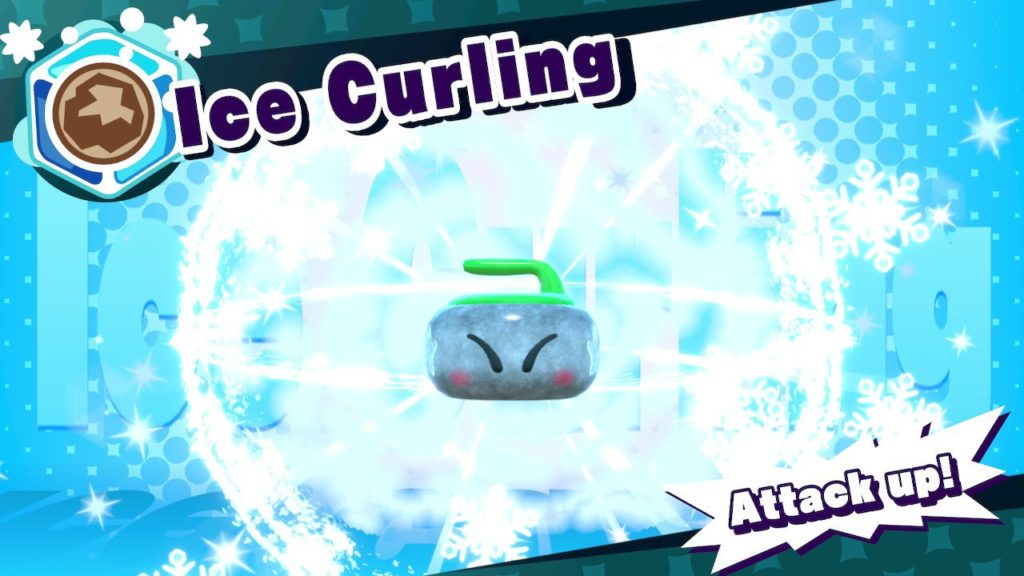
But enough about that, let’s talk about what this game brought to the series; combination powers and multi-character gameplay, and how they feed into each other.
This game is 100% a four-character experience, and it doesn’t matter if that’s AI or players controlling it. Anyone can drop in and take over a party member, but the AI are competent on their own to help you out. However, the great part of the whole system is that everyone but player 1 is controlling an enemy archetype. Combined with Kirby’s continued ability to copy powers, this gives the party access to 4 core powers at once. This is backed by the fact that AI attack when needed and use their powers to clear puzzles, allowing the player to focus on simply exploring and finding secrets in most cases, rather than finessing the AI into precise spots.
The good thing that comes out of this system is that you can also combine powers. The screenshot above is one of them (rock power +ice power), and this combination mechanic is used in a ton of ways. Weapon-based powers can all gain elements to do new things. The ninja power can gain wind to throw air columns. Swords can gain fire to burn everything it touches. The rock gaining ice allows it to slide along killing enemies. However, this is also backed by some clever environmental mechanics. The ice power can freeze waterfalls. The bug power allows you to throw characters through breakable walls.
The end result of all of this is that the game’s difficulty can be low without negatively impacting the game. The challenge becomes the puzzle solving involved in using your party to find secrets in the environment, whether it be switches to open secret levels or puzzle pieces to collect for pictures. It’s by far the most puzzle solving I’ve done in a Kirby game, and it makes for a really satisfying loop in trying to find all the little secrets in each level.
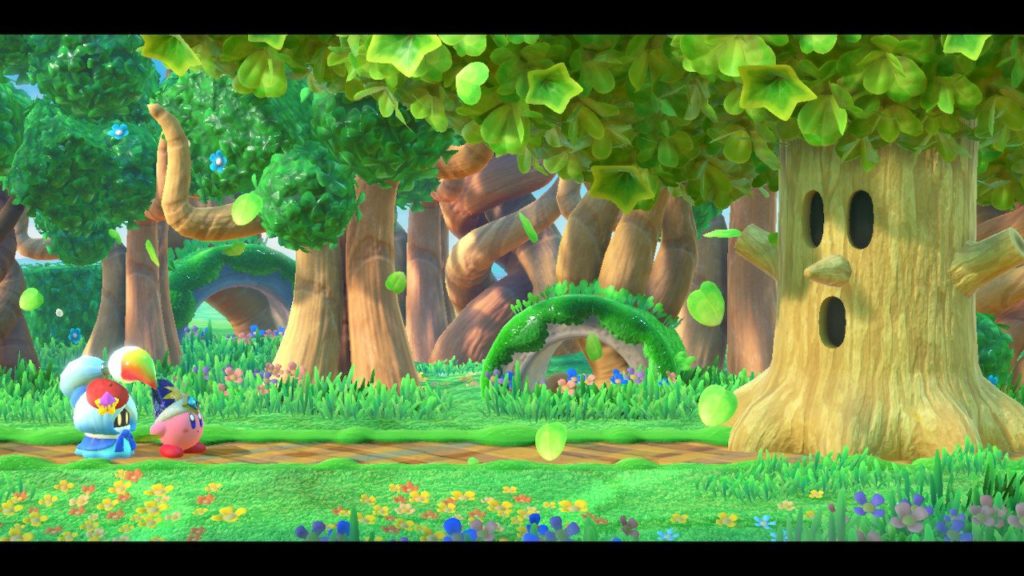
In no surprise though, this game also doesn’t steer away from some classic expectations of the series. Standard bosses return, like the Whispy Woods tree or Kracko. You still romp through Dream Land for a while. The majority of the enemies that are there are still powers from past games. However, it never feels dull. It reuses what is expected of the series in new ways, either through new mechanics added to the bosses, or clever new uses for the absorbed powers. It gives the right blend of nostalgia and new, which has been a hallmark of the series for a long time.
Admittedly though, I did mostly play this game as a sort of no-thought gap game. I knew there were games coming out soon that I wanted to play (looking at you Ni no Kuni 2), so I didn’t want to play something long. This was a quick hitter, easily finishable in 6-8 hours. It’s also not difficult, so the level of frustration is low. However, it’s just flat out fun. It doesn’t take itself too seriously, once again brings some new mechanics into the series, but still plays enough of the old beats to be familiar. While it’s hardly going to be a game of the year candidate, it’s pretty easy to recommend taking a look at this one at the very least.
Also, as mentioned in the Kirby: Planet Robobot ramblings, Nintendo has once again put in an updated little adorable Kirby icon for their website. Nice touch.


